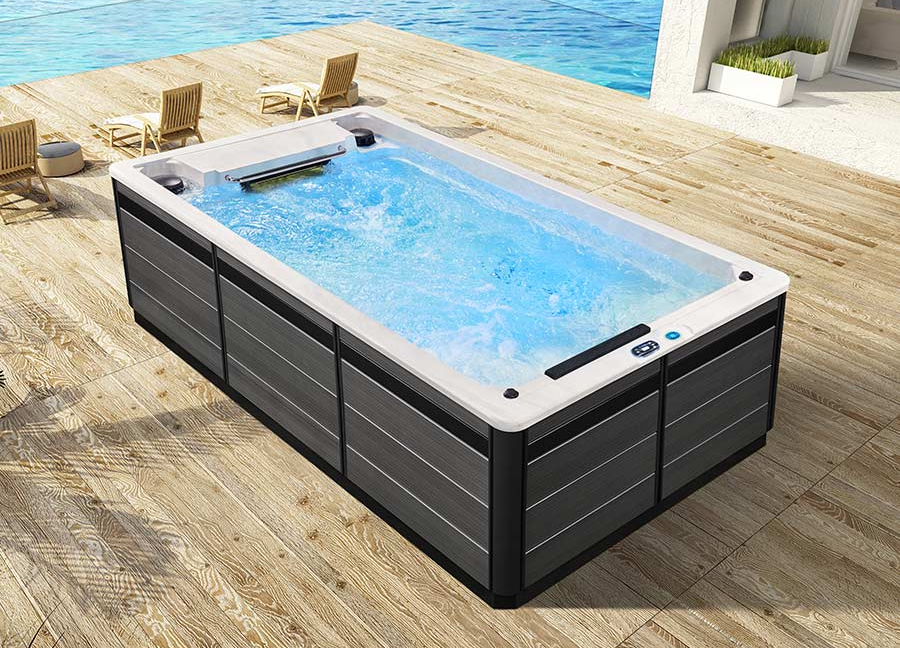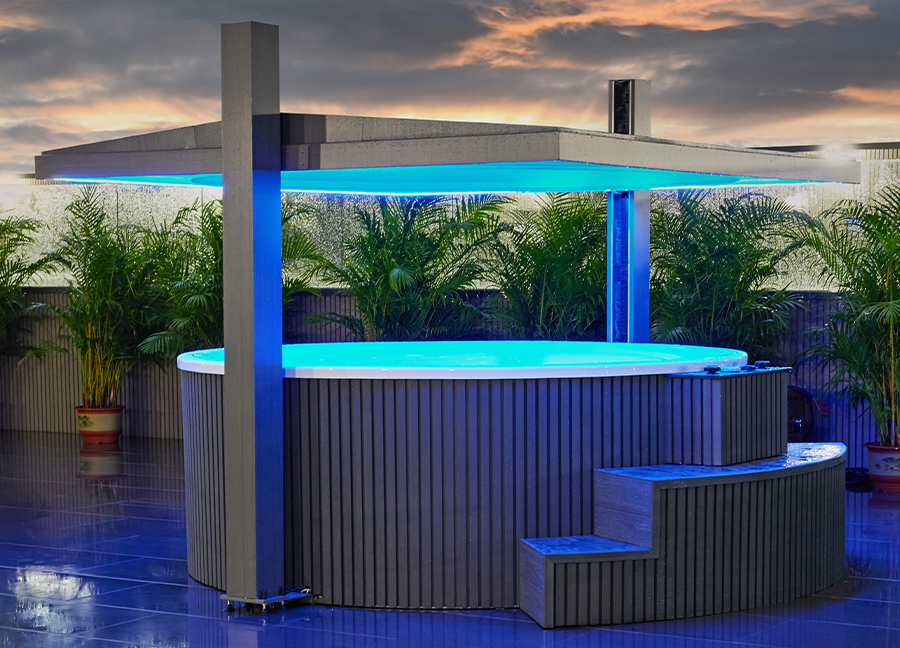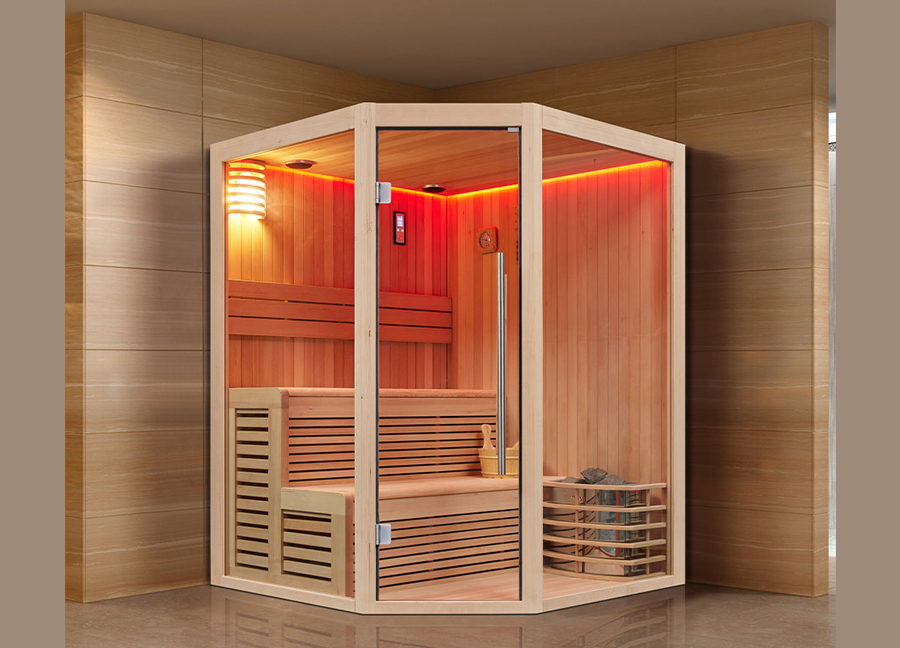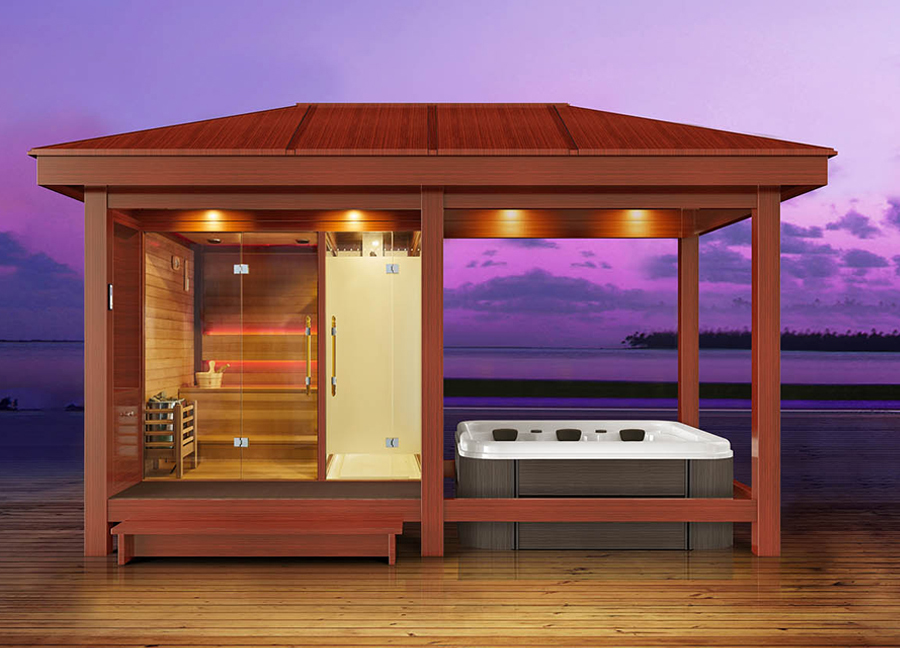With its multiple features, including hot water circulation, high-pressure jets, and air jets, massage spa tubs have become a common relaxation tool in modern homes and wellness facilities.
Many massage spa tub users encounter a seemingly insignificant problem that actually detracts from their experience: the accumulation of bubbles on the tub's surface. These bubbles can be visually detrimental, or worse, hinder the proper hydrotherapy effect, or even signal improper equipment maintenance.
So, where do these bubbles come from? What problems do they cause? And how can they be effectively eliminated and prevented? This article will provide a professional, in-depth, and systematic analysis of this topic to help users use and maintain their massage spa tubs effectively for the best spa experience.
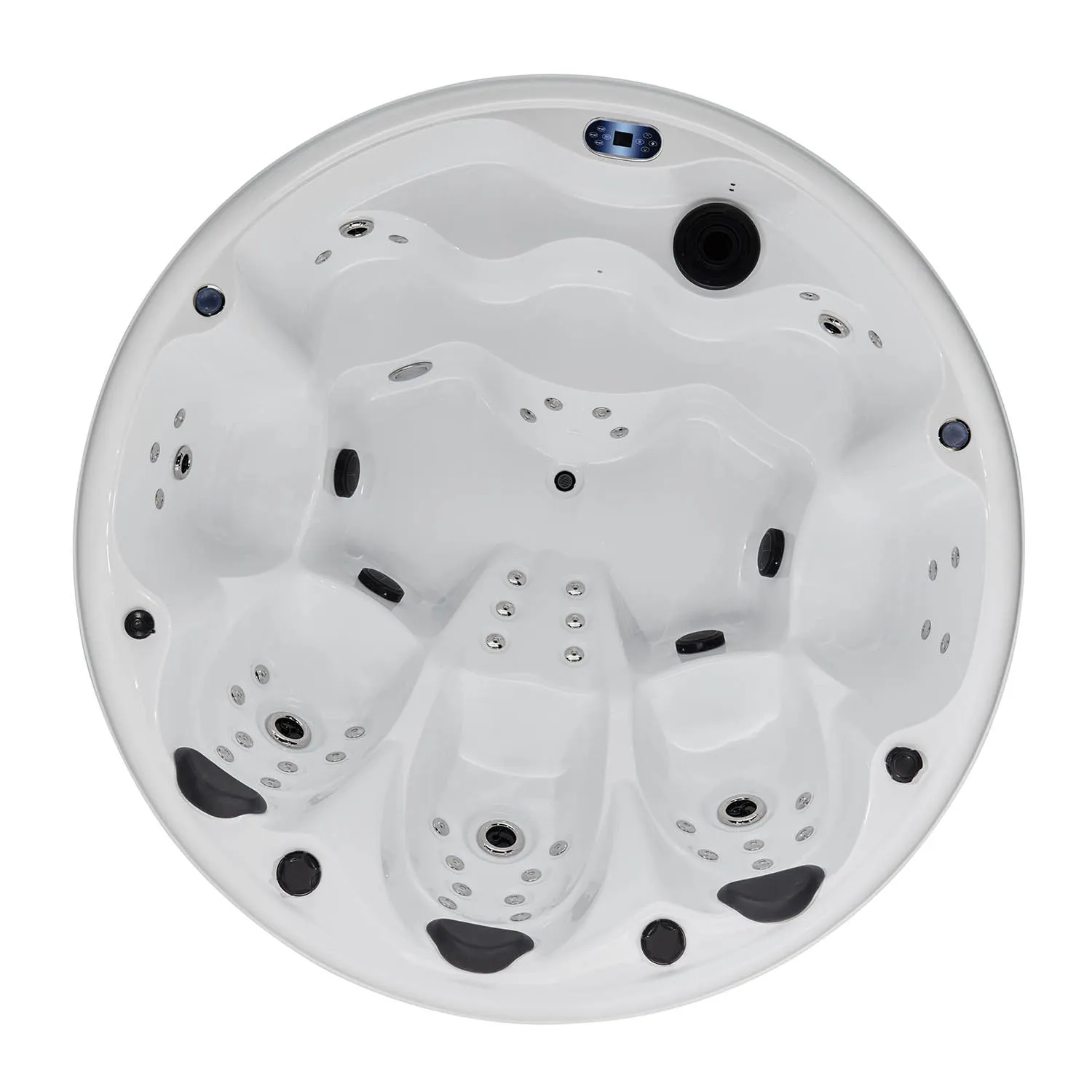
The Nature of Bubbles: Not Part of the Massage Spa Tub's Function
Before discussing methods to eliminate bubbles, it's important to understand that bubbles in a massage spa tub are not a core design feature of the spa system itself. Massage spa tubs do have a "bubble jet" feature, but these bubbles are typically large and quickly burst upon formation, providing a gentle touch and surface massage effect.
When bubbles become excessive, symptoms often include:
· A large layer of white foam forms on the surface;
· The bubbles are dense and difficult to dissipate;
· The bubbles persist even after the device is turned off.
These bubbles are not the bubble massage spa tub itself, but rather "foam"—their generation is closely related to water composition, additives, detergents, skin oils, and even residue from the device.
Where do bubbles form in a massage spa tub?
Sources of bubbles in a massage spa tub include:
1. Residual detergent or bath products
2. Water hardness and impurities
3. Body secretions and residual skincare products
4. The internal system of the massage spa tub is not properly cleaned
5. The water temperature is too high or the bubble function is set incorrectly
1. Residual detergent or bath products
This is the most common cause. This is caused by not fully rinsing surfactants such as shower gel, shampoo, and bubble bath from the body before using the massage spa tub. These substances, combined with the water flow and airflow of the massage spa tub, quickly produce foam.
Additionally, using large amounts of foaming cleaners, such as dishwashing liquid or all-purpose cleaning foam, when cleaning a jacuzzi spa tub and not rinsing thoroughly can also cause foaming problems.
2. Water Hardness and Impurities
If the jacuzzi spa tub water contains high levels of minerals, dissolved organic matter, or chemical impurities, high temperatures and turbulent water flow can also cause a "foaming enhancement" effect. This alters the surface tension of the water, making it easier for air to be trapped and making it more difficult for the foam to dissipate.
3. Body Secretions and Skincare Product Residue
Before entering a massage spa tub, a variety of substances, such as sebum, sweat, makeup, sunscreen, and body lotion, are present on the skin. These substances contain oils and emulsifiers, which can form emulsions or foam upon contact with water, especially under the influence of a bubble jet.
4. Inadequate Cleaning of the Massage Spa Tub's Internal System
If a massage spa tub is used for a long time without proper maintenance, soap scum, biofilm, and chemical residue can accumulate on the tubing, pump, and jets. When the device is operated again, these residues will again produce foam upon contact with water, potentially causing water quality deterioration.
5. The water temperature is too high or the bubble function is improperly set
Increased temperature reduces the surface tension of water, making it easier for foam to form. High-frequency, high-intensity bubble systems (such as air jet systems) may also promote foam formation, especially in the presence of other foaming substances.
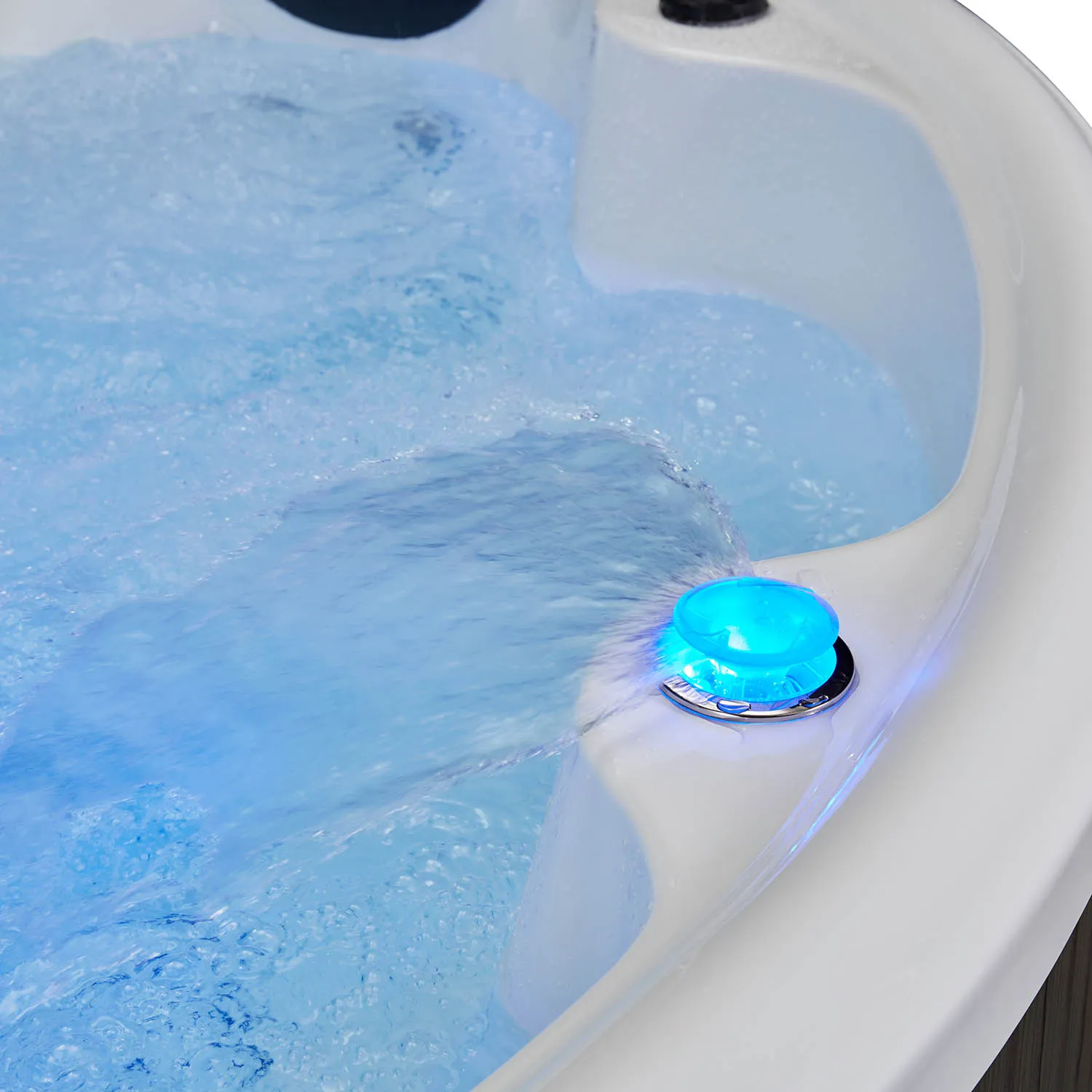
What are the potential problems associated with bathtub bubbles?
Although bubbles may appear harmless on the surface, ignoring them for extended periods can lead to the following negative effects:
1. Impacting hydrotherapy effectiveness: Thick foam blocks the direct interaction between water flow and bubbles, weakening the massage effect.
2. Impeding heat dissipation and circulation: Foam can enter pipes or pumps, interfering with the efficiency of the jacuzzi spa.
3. Promoting bacterial growth: The "surface" beneath the bubbles is actually more conducive to bacterial growth.
4. Impacting water stability: The persistent presence of foam often indicates excessive dissolved surfactants, making the water unstable.
5. Producing an odor or stickiness: Some foam is derived from organic pollutants, and its persistent presence can cause odor or skin irritation.
How to remove bubbles from a massage spa tub?
To effectively remove bubbles, a scientific and systematic cleaning approach is required. The following describes specific methods from three perspectives: emergency treatment, deep cleaning, and preventive maintenance.
A. Emergency Measures: Quick Foam Removal
If bubbles have already formed while a spa treatment is in progress, the following temporary measures can be taken:
(1). Turn off the bubble system
Immediately turn off the air jets or bubble massage system to prevent further foaming. Allowing the water surface to calm will help the foam to naturally break down.
(2). Use a Foam Depressant
Specialized spa defoamer is a silicone- or plant-based emulsion that quickly neutralizes foam. To use: Add an appropriate amount of foam defoamer to the water according to the instructions. The foam will quickly dissipate.
⚠️ Note: Foam defoamers are only a temporary solution and are not a substitute for thorough cleaning.
(3). Skim Foam with a Towel or Net
Gently skim foam from the surface of the water with a clean towel or mesh bubble net to reduce its density and prevent it from spreading further.
B. Deep Cleaning: Address Foam Problems at the Source
If foaming problems occur frequently, thoroughly clean the massage spa tub system. The steps are as follows:
(1). Clean the internal plumbing system
Use the dedicated "jacuzzi spa tub pipe cleaner" (Spa System Flush):
· Fill the tub with water;
· Pour an appropriate amount of pipe cleaner;
· Activate the pump and bubble function for 10-15 minutes to allow the solution to circulate and clean the internal pipes;
· Let it sit for 10 minutes, then drain the tub;
· Refill with clean water and rinse once more;
· Finally, drain thoroughly.
This will remove sources of foam, such as soap scum, grease, and biofilm.
(2). Clean the tub surface and nozzles
Use a non-foaming, non-irritating jacuzzi spa tub cleaner to thoroughly wipe the tub and nozzles, then rinse thoroughly with clean water. Focus on areas prone to foaming, such as deposits and grease.
(3). Check the filter system
Clean or replace the filter in your massage spa tub to ensure it is effectively capturing impurities and reducing sources of contamination.
C. Preventive Maintenance: Reduce Foaming During Daily Use
(1). Wash Your Body Before Use
Before entering the massage spa tub, rinse your body with clean water, especially removing products containing surfactants, such as shower gel and body lotion.
(2). Do Not Use Foaming Toiletries
Foaming products such as bubble bath, shampoo, and body wash are strictly prohibited in jacuzzi spa tubs. Once these substances enter the spa system, they will repeatedly produce foam.
(3). Control Water Temperature
Set the massage spa tub's heating system temperature within a reasonable range (generally recommended: 37°C to 39°C) to avoid excessive foaming caused by overheating.
(4). Regular Maintenance
It is recommended to systematically clean the jacuzzi spa tub every one to two months. Regularly inspect the pump, nozzles, and pipes for scale to prevent recurring foam buildup.
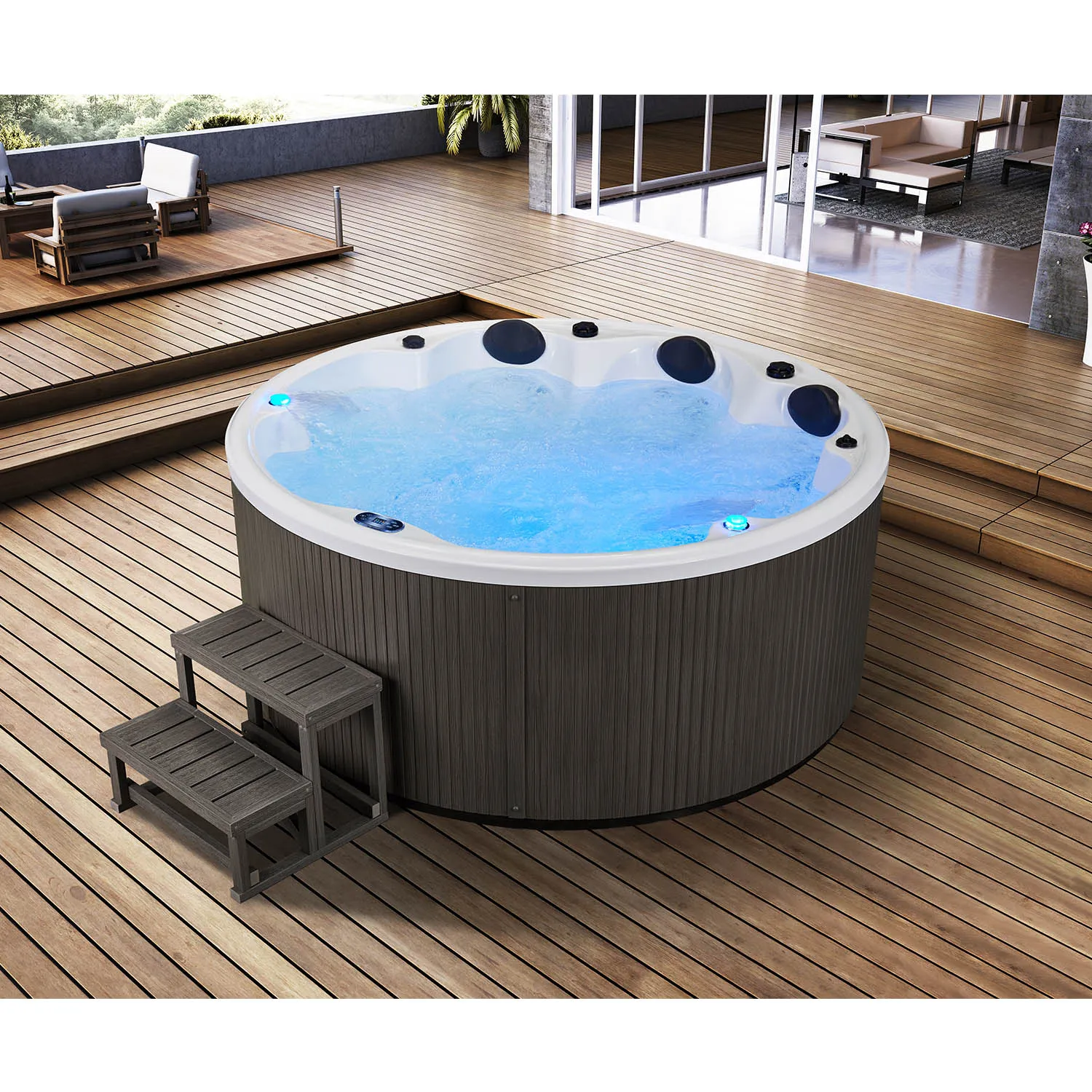
Improper Bubble Removal Methods and Warnings
When attempting to remove bubbles, some incorrect practices are not only ineffective but can actually harm your jacuzzi spa tub or your health. Be especially cautious:
1. Excessive use of disinfectants (such as bleach)
While bleach can reduce organic matter, it is highly irritating to the skin and can corrode the nozzle seals or internal metal components of the unit.
2. Using kitchen cleaners
Kitchen cleaning products (such as dishwashing liquid) are strong foaming agents. Once left in a jacuzzi spa tub, they can cause recurring foaming problems.
3. Not using specialized foam control products
Some low-quality "all-purpose foam removers" on the market are not suitable for massage spa tubs. Some may even clog the nozzles or affect water quality.
Massage Spa Tub Bubble Problem Summary Form
| Category | Content Classification | Detailed Description |
| 1. Causes of Bathtub Bubbles | Detergent residue | Residues of shower gel, shampoo, or bathtub cleaner left behind by users who haven't rinsed them off properly |
Poor water quality | Excessive mineral and organic impurities in the water can cause foaming | |
| Skin secretions | Sebum, cosmetics, and sunscreen entering the water can cause significant foaming | |
| Improper equipment | Scale and biofilm buildup on pipe nozzles can cause repeated foaming | |
| Setup issues | Excessive bubble formation and high water temperature can promote foam formation | |
| 2. Effects of Bathtub Bubbles | Impaired functionality | Foam can block water flow and affect massage effectiveness |
| Health risks | Bacteria can grow in the bubbles, causing skin and eye irritation | |
| Deteriorating water quality | Residual foam can cause water turbidity and a change in taste | |
| Equipment wear and tear | Bubbles entering the pipes can affect the operation of the pump and circulation system | |
| 3. Bathtub Emergency Treatment | Turn off the air bubble system | Reduce foaming |
Use a foam suppressant | Add spa-specific defoamer to quickly eliminate foam | |
| Manual skimming | Use a towel or net to remove surface foam | |
| 4. Bathtub Deep Cleaning Methods | Pipe cleaning | Use system cleaner to circulate internally and thoroughly remove any residue |
| Nozzle cleaning | Manually scrub the showerhead to prevent buildup and foaming | |
| Filter replacement | Keep the filtration system clean to prevent impurities from backflowing | |
| 5. Preventive Bathtub Maintenance | Cleanse your body before use | Rinse off body lotion and shower gel to prevent the ingress of surfactants |
Do not use foaming products | Do not use shampoo, bubble bath, or other products in the massage spa tub | |
| Control water temperature | Maintain the temperature between 37°C and 39°C to reduce the risk of foaming | |
| Maintain equipment regularly | Perform a deep clean every one to two months to keep the system in good condition | |
| 6. Warnings about Incorrect Methods | Do not use bleach | Do not use this product to remove bubbles, as it can corrode equipment and irritate the skin |
| Avoid kitchen cleaners | It can cause strong foaming and may worsen after use | |
| Use with caution if not using professional-grade products | Poor-quality "foam remover" may clog the showerhead or contaminate the water |
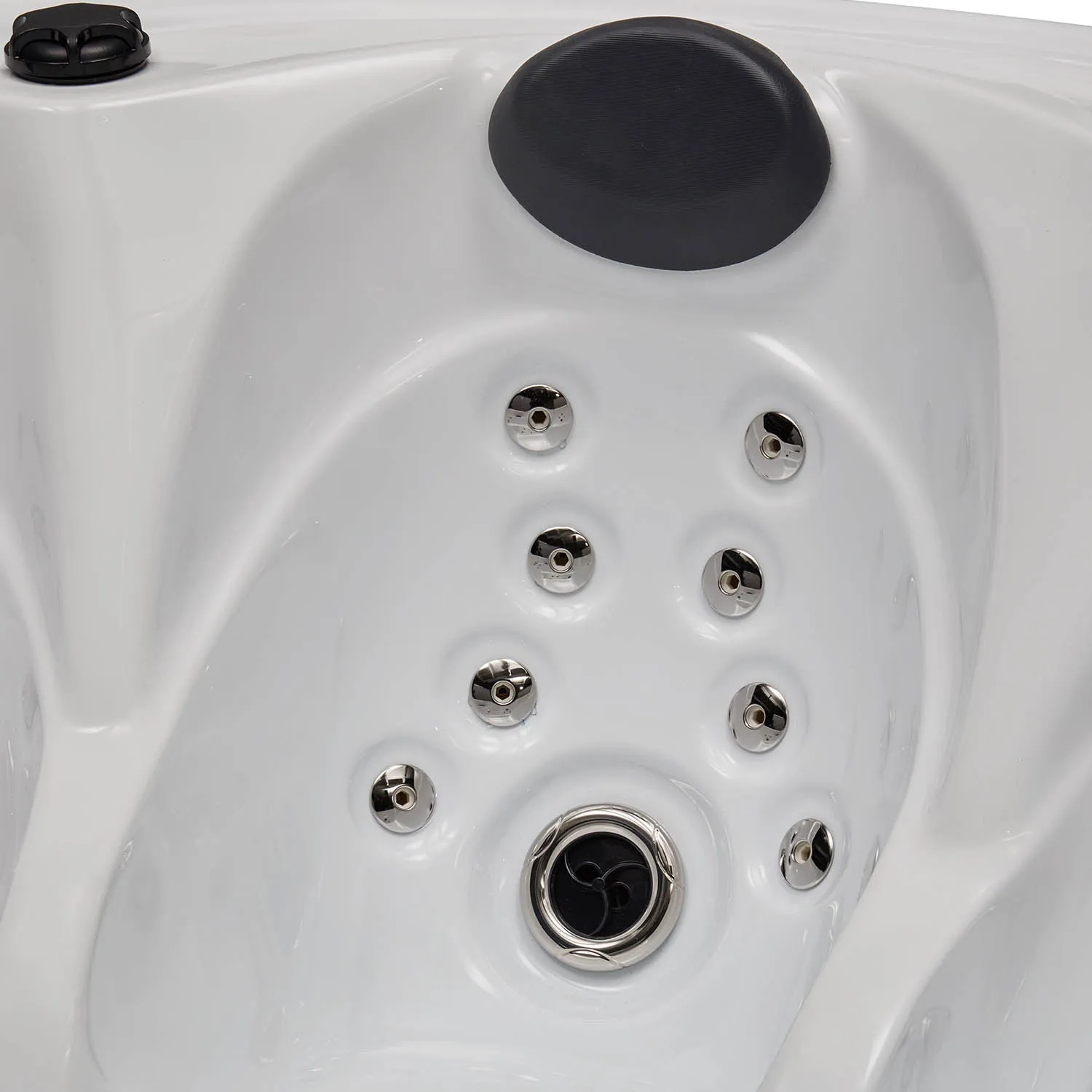
How Do You Ensure Safe and Damage-Free Shipping?
Every unit is carefully packaged with reinforced frames, protective foams, and waterproof layers to ensure safe arrival. We follow international export standards and offer documentation support.
For large wholesale shipments, we optimize container loading to reduce space waste and lower your shipping costs. Trust our factory in China to handle your order professionally, from quotes to final delivery.

